Review: LG Tribute 5 for Boost Mobile
Feb 11, 2016, 10:00 AM by Eric M. Zeman
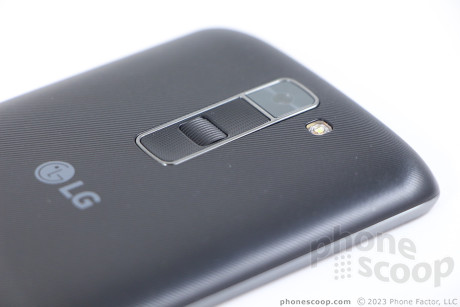
LG's latest low-cost smartphone for Boost Mobile is the Tribute 5. The phone competes in a crowded roster of similarly-priced handsets in Boost's lineup and struggles to stand out from the crowd. Here is Phone Scoop's take on this inexpensive Android smartphone.
HARDWARE
Is It Your Type?
The Tribute 5 from LG is an odd follow-up to last year's Tribute 2. In some ways the Tribute 5 is better than the Tribute 2, but in other ways, it's worse. This low-cost Android smartphone fills a questionable role in Boost Mobile's lineup, and is only for those who need a basic smartphone that can be used with prepaid service.
Body
The Tribute 5 is a more attractive, usable handset than its predecessor, but I'm not sure that's saying all that much. The Tribute 5 — which is very similar to the K7 sold by T-Mobile — is a slim smartphone. LG made improvements to the design and materials, which are the only real reasons to consider the T5 over the T2. (LG says it skipped over the Tribute 3 and Tribute 4 names in a nod to the 5-inch screen and dual 5-inch cameras.)
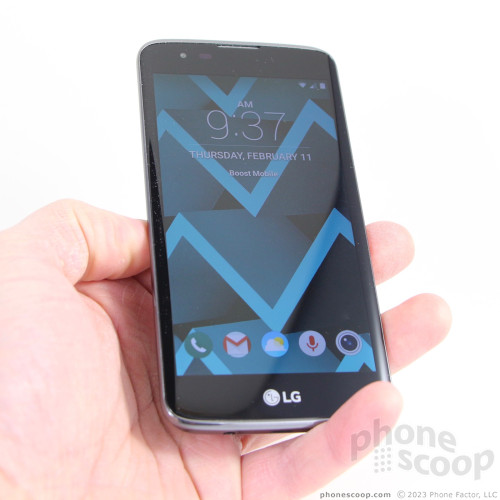
The Tribute 5 is a conservative handset with a somewhat generic look. The small amount of attention paid to smoothing out the edges, so to speak, goes a long way to boosting its appeal.
The T5's defining characteristic is the front panel, which LG is calling 2.5D Arc Glass (groan). This essentially means the glass is curved minutely where it meets the frame at the edges to form a more seamless look and comfortable shape. The frame is composed of dark gray plastic and is rather thin. It joins the rear shell, which wraps slightly around the side, top, and bottom edges, to cradle the upper half of the phone. The back panel is ribbed, black plastic and carries forward the rounded shape we've seen on the backsides of LG handsets for some time now.
The size and weight of the phone are great. Phones with 5-inch screens can start to become unwieldy, but the Tribute 5 strikes a nice balance. It is 14mm taller and 7mm wider than the Tribute 2, but 2mm thinner. The reduction in thickness goes a long way to improving the overall experience with this phone. I found the T5 comfortable to hold and use. Most people should be able to use the phone one-handed. It's slim enough that it will fit into most pockets without trouble, but I noticed the grippy rear panel sometimes pulled at my pocketliner when I attempted to retrieve the phone.
I have no complaints about the materials and build quality. The glass panel feels like it belongs on a much more expensive handset. The T5 is assembled tightly and avoids coming off as cheap, despite its entry-level stature.
The glass panel hides a lot under the dark coloring. The front camera is easy to spot, but a pair of sensors are practically invisible. There are no keys or buttons, as the Tribute 5 uses on-screen controls.
Like the majority of phones LG has released in the last few years, the Tribute 5's volume and power buttons are located on the rear surface. That means the left and side edges are utterly smooth. So is the top edge. The bottom edge holds both the micro-USB port and standard headphone jack. There is something to be said for phones with smooth edges.
As I've noted in reviews of other LG handsets, the rear-placed controls take some getting used to and that's no different with the Tribute 5. The quality of the rear-mounted control cluster, framed by a shiny chrome rim, is quite good. My finger had no problem differentiating between the volume up, screen lock, and volume down buttons. The lock button has a rounded shape that sets it apart from the toggles above and below it. All three buttons offer good travel and feedback and can be set to open select apps, such as the camera, with a double press if you wish.
You won't have any trouble removing the rear cover. A small notch in the left side makes it easy to pry off with your thumbnail. Some will be pleased to know the battery itself is removable. LG stacked the memory card slot on top of the SIM card slot, both of which are accessible once the rear cover is removed. You don't have to pull the battery to swap SIM cards.
In sum, the LG Tribute 5 is a good little phone. It's easy on the eyes — even if it borders on vanilla — and is easy to use.
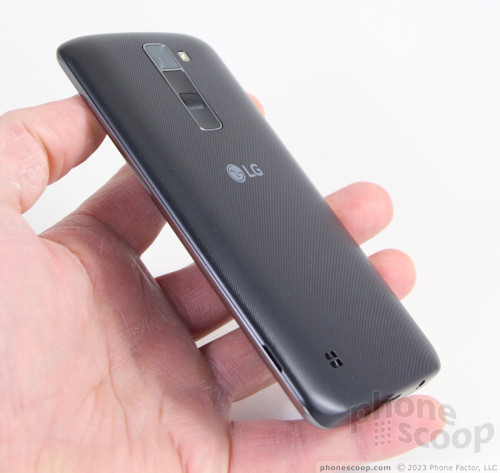
Screen
The Tribute 5's screen kind of bums me out. The T2's display measured 4.5 inches and had 854 by 480 pixels. The T5's screen is bigger at 5 inches, but it maintains the 854 by 480-pixel resolution. That means the pixel density actually decreased from 219ppi to 196ppi. After spending years looking at 720p, 1080p, and 1440p screens, my eyes are surely spoiled. Even so, that doesn't change the fact that pixels are easily visible to the naked eye on the T5's screen. Icons and other on-screen elements sometimes look hazy. Small text can be unreadable in some instances. LG cheaped out with this screen. As disappointed as I am with the resolution, the display is very bright and easily viewed outdoors. Moreover, viewing angles are quite good.
Signal
Boost is a part of Sprint and uses the Sprint network. The handset easily found Sprint's LTE 4G signal in the greater New York region and remained connected throughout my time with the phone. I was able to place/receive calls everywhere I took the phone, which didn't drop or miss any incoming calls. Data speeds were on par with other devices sold by Boost Mobile, which is to say of middling velocities. The T5 delivers a good experience when browsing web sites and scrolling through Facebook over LTE, but it starts to choke on app downloads and data-heavy activities, such as streaming high-def YouTube or high-quality Spotify. It's swift enough for basic use, but more demanding tasks seem to demand WiFi.
It's worth pointing out that the Tribute 5 supports GSM/WCDMA for global roaming.
Sound
The Tribute 5 is a better voice phone than the Tribute 2, but it still delivers a mixed experience. Call quality is very good as long as you keep the volume set at about 50%. Unfortunately, that volume level is only good for quiet spaces, such as home or a private office. The Tribute 5's earpiece delivers a huge amount of sound if you crank it all the way up, but quality suffers immediately thanks to distortion. I was able to hold a conversation in a really loud bar, but it was a chore. I wish clarity were better at higher volumes. People I spoke to through the T5 said I sounded mediocre. The speakerphone is only loud enough for quiet spaces, and quality is scratchy at best. Ringers and alerts are not the loudest, but got my attention when necessary. The vibrate alert is quite jarring.
Battery
LG increased the capacity of the Tribute's battery from 1900 mAh to 2125 mAh; it pushes through a full day with about 10-20% remaining at bedtime. I was able to kill the battery with really heavy use by about 9PM on occasion, but most days it managed to keep going between 7AM and 11PM without question.
The Tribute 5 includes the system-level battery saver tool, which can be turned on manually or set to switch on automatically when the battery reaches 15% or 5% capacity. I set it to turn on at 15% and it only kicked on once while I tested the phone. I can't say it added much life to the phone.
It doesn't support rapid charging or wireless charging.
Bluetooth, GPS, NFC, WiFi
The performance of the Tribute 5's host of radios was only so-so. The Bluetooth allowed me to connect the T5 to headsets, speakers, my car, and other mobile devices. Calls passed through mono headsets were atrocious, as were calls routed through my car's hands-free system. Music pushed to stereo speakers, however, sounded great.
The GPS radio took longer than other phones to locate me (more than 20 seconds) and was only as accurate as about 50 feet (other phones are accurate to less than 25 feet). Google Maps was somewhat slow on the Tribute 5, which I attribute more to the processor than the GPS radio. The combination is usable, but left me wanting more.
WiFi worked wonderfully. The Tribute 5 doesn't have NFC.
SOFTWARE
Lock Screen
The Tribute 5 makes use of LG's innovative and helpful lock screen tools thanks to KnockON and Knock Code.
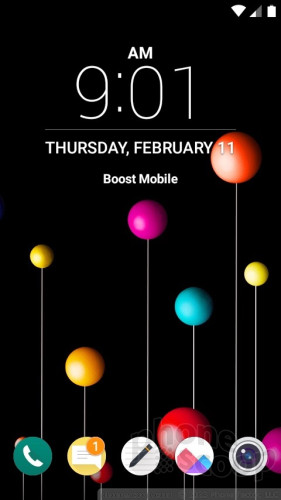
Tapping the display twice wakes the screen and shows the clock, notifications, and several app shortcuts. This is called KnockON. I wish the clock were bigger and bolder; it feels rather squished up at the top of the screen. Your app notifications appear in chronological order beneath the clock. If you've chosen to add app shortcuts (four are installed by default), each provides an unread count for calls, texts, emails, etc.
The notifications can be dismissed or acted upon from the lock screen, though the latter of these requires you to unlock the phone first. The same goes for the unread counts on the app shortcuts. Double-tapping the display a second time will turn it off. Alternately, you can just leave it untouched for 30 seconds and it will turn off on its own.
Knock Code is one of several different ways to secure the Tribute 5. Rather than set a traditional PIN, password, or trace pattern, you can record your own, unique pattern of taps to unlock the phone. I like this option.
Home Screens
Like the Tribute 2, V10, and other current LG handsets, the Tribute 5 runs Android 5.1 Lollipop (why not Android 6 Marshmallow?!) and a light user interface skin from LG. The home screen experience of the T5 is practically identical to that of every phone LG has released during the last 12 months.
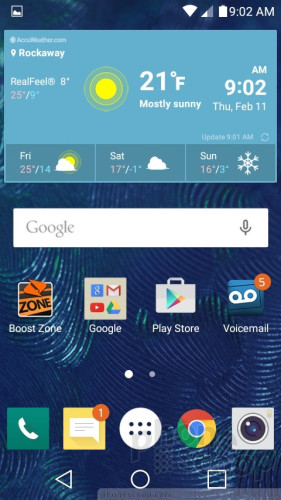
The home screen allows users to install as many apps, widgets, and shortcuts as they wish, as well as tweak wallpapers. Several themes impact colors, sharing, borders, and other aspects of the UI. (More themes are available to download from LG.) The app drawer is arranged in side-by-side screens, rather than a vertical list. As it has for years, LG makes it possible to change the size of app icons in the drawer, hide/show apps, as well as uninstall apps completely. The settings app ditches the stock Android appearance for fonts and colors controlled by the selected theme, but the layout and usefulness are about the same.
The Quick Settings drop-down shade includes access to toggles and other controls. I like how easy it is to edit which toggles are available in the Quick Settings shade. The shade also lets you adjust brightness and volume profiles.
LG seems to have renamed QuickMemo; now it's called Capture+, although the functionality is the same. Use the Quick Settings shade to access the Capture+ tool. A press of the button takes a screenshot and then opens a basic editing tool for adding comments and so on. Once you're done annotating the screenshot, it's a breeze to send the shot to others via MMS, email, and whatever apps you might prefer. LG's EasyHome (dumbed down home screen experience for novice users) is aboard, but QSlide apps (miniaturized for the home screen) are not.
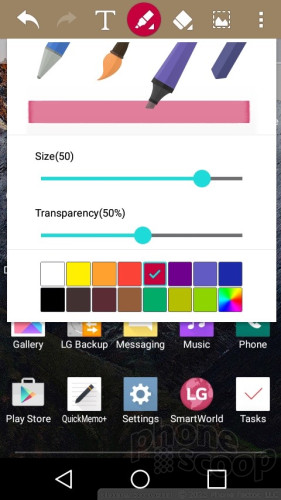
As far as performance is concerned, the phone has a 1.0 GHz quad-core Snapdragon 210 processor with 1 GB of RAM. That's a step down from the Snapdragon 410 in the Tribute 2 and, frankly, I could tell. The Tribute 5 was sometimes sluggish and stuttery. More than a few apps were slow to open (camera, maps) and I often noticed a delay between when I pressed the screen and the Tribute 5 reacted.
Camera
There is no physical camera button on the Tribute 5, but a double press of the up volume button will open the camera. The camera is also available via the lock screen shortcut and app icon on the home screen. It's a bit too slow to open for my tastes.
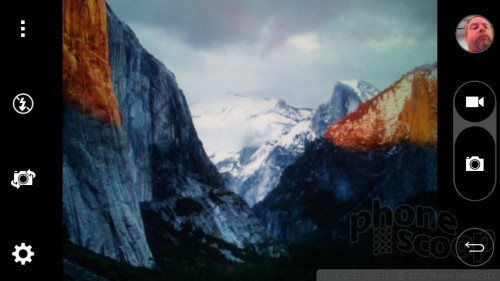
LG apparently knows Tribute 5 owners aren't seeking a killer camera. This phone has a single shooting mode (standard/auto), which is really boring. Some buttons adorn the left edge of the screen for toggling through the flash, user-facing camera, and menu. There are separate buttons on the right for the camera and the video camera.
Options for adjusting the camera are severely restricted. You can adjust the aspect ratio, turn on/off LG's “Say Cheese” voice-activated shutter, and adjust the length of the timer. There are absolutely no advanced functions (HDR, dual-shot) nor even any fun tools (panorama, bokeh). HDR and panorama are fairly standard by now, even on lower-end phones, so their absence here is notable. It's as basic as a camera app gets these days.
I wish it were faster to focus and snap images.
Photos/Video
The Tribute 5 has a 5-megapixel main camera and a 5-megapixel selfie camera. Neither is anything to write home about.
The main camera manages to set color and exposure accurately, but it suffers from soft focus and an annoying amount of grain. In spectacularly bright, outdoor shots, it does as well as any other camera, but introduce even a bit of contrast or shading and it gets confused. The flash doesn't seem to help indoor shoots, other than to overexpose people's faces.
The selfie cam doesn't do any better. Images are saturated with grain. Focus was acceptable, as was white balance, but any sort of light source in the background will smear images with nasty streaks of light.
Disappointingly, the Tribute 5's video camera is limited to 720p HD resolution. The Tribute 2 could capture 1080p HD video. The Snapdragon 210 is the culprit here. The 720p footage I captured with the T5 was mediocre at best.
The T5 is not meant to be a primary imaging device for anyone, which the results make painfully clear. If you care even a little bit about the quality of your pictures and video, use a real camera.
Boost and LG Stuff
The Tribute 5 has just 8 GB of internal storage, of which 4.2 GB is available to users. I highly recommend you enhance the T5 with a memory card. Bloatware isn't overly awful. You'll see the Amazon shopping, music, and photos apps, as well as Boost Zone, Gadget Guardian, LG Backup, and LG SmartWorld. You can uninstall these if you wish.
Wrap-Up
I'm torn on whether or not I should recommend the LG Tribute 5 to anyone. The phone's retail price is $100. Boost Mobile is selling it right now for $85. Inexplicably, Boost is still selling the LG Tribute 2 also for $85. It's also selling the LG Volt 2 for $70, the LG Volt (1) for $85, and the LG Tribute (1) for $70. The Volt 2 is the best of these handsets, no doubt. Moreover, if you're willing to spend $100 - $110, the ZTE Warp Sync and Samsung Galaxy Prevail LTE are much better options.
Where does that leave the Tribute 5? If your priority is a handset that delivers a good in-hand experience that is also inexpensive, attractive, and flexible (battery, memory card), then the Tribute 5 fits those bills. I found the screen and sound quality lacking, but battery life is quite good. The Android operating system functions well enough, but it stutters from time to time and some apps (camera, maps) are too slow for me. The camera, by the way, is not up to par for a $100 handset in this day and age.
In light of Boost Mobile's current lineup and the T5's mixed performance, I can't tell you to run out and buy the Tribute 5 from LG. I just can't.

Comments
No messages


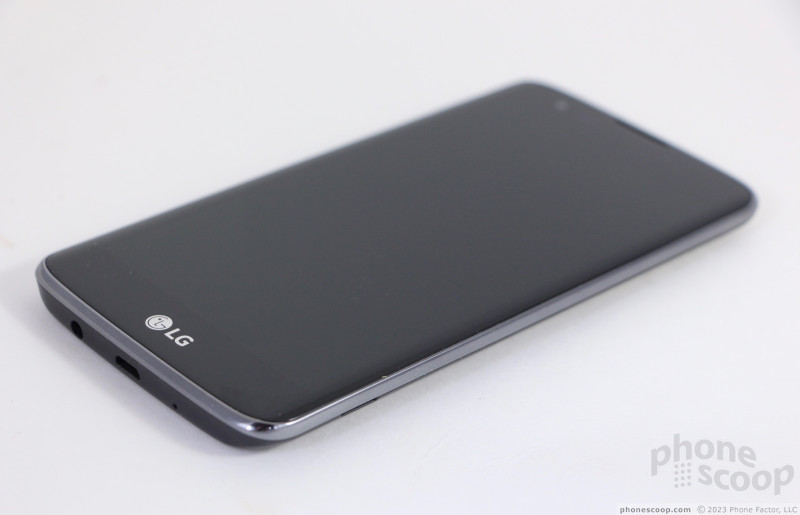



















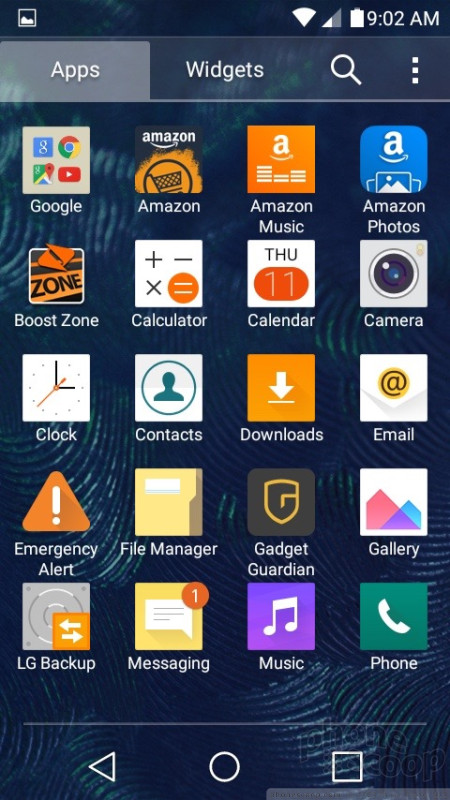





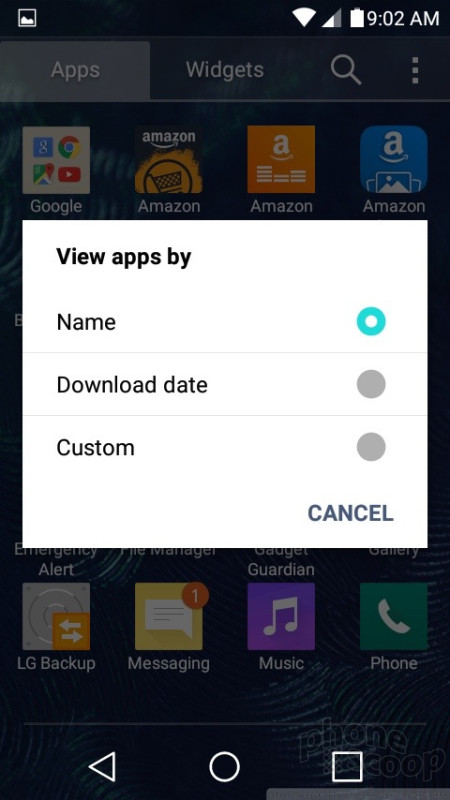





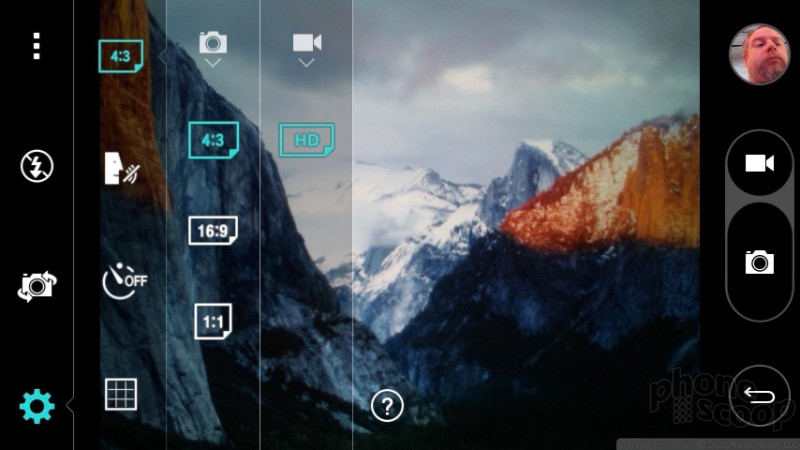

















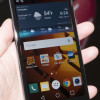 Hands-On with the LG Tribute 5 for Boost
Hands-On with the LG Tribute 5 for Boost
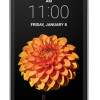 T-Mobile Selling LG K7 for $140
T-Mobile Selling LG K7 for $140
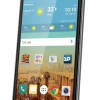 Boost Mobile Begins Selling LG Tribute 5
Boost Mobile Begins Selling LG Tribute 5
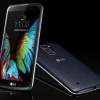 LG Kicks Off CES with K Series Camera-Focused Phones
LG Kicks Off CES with K Series Camera-Focused Phones
 LG Tribute 5
LG Tribute 5




